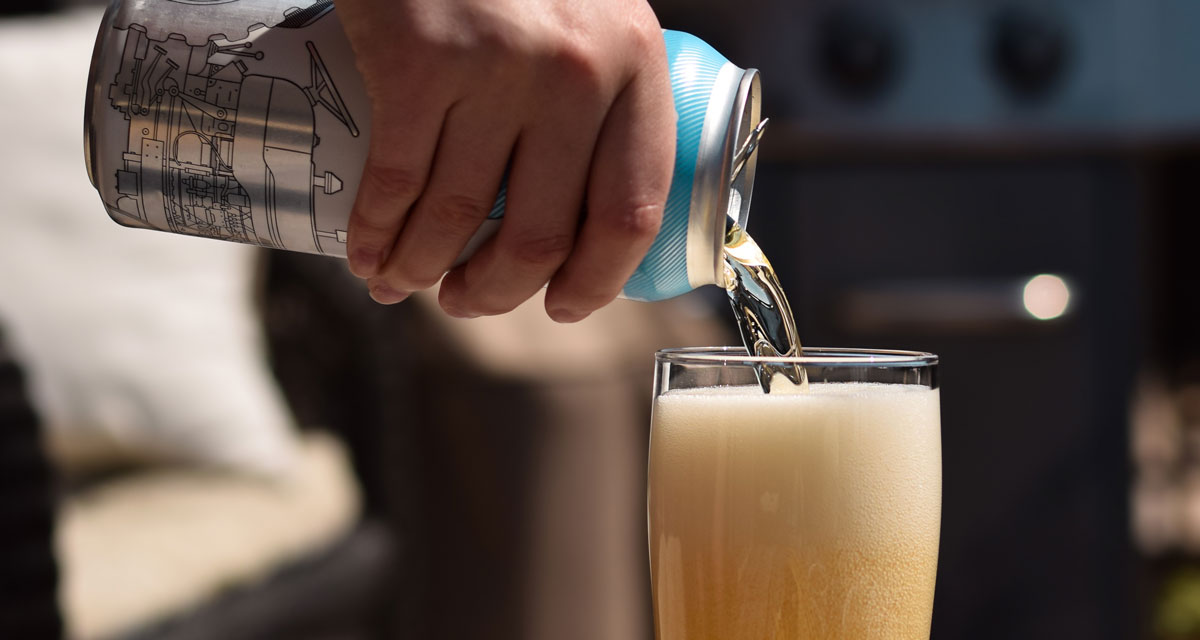The craft brewery industry continues to evolve, with new retail trends reshaping how brands connect with their audiences. At Hughes Decorr, we’re at the forefront of these changes, helping breweries adapt with creative, impactful solutions that elevate their presence in a competitive marketplace.
Retail Trends
Retailers are constantly challenged by more demanding consumers, evolving retail formats and regulatory changes.
- Expansion of Retail Channels: Ontario’s government has expanded beer sales to include grocery stores, big-box retailers, and even convenience stores. Starting in August 2024, retailers can offer larger pack sizes and ready-to-drink (RTD) beverages like seltzers and coolers. This change increases visibility for craft breweries, providing them with more shelf space and easier access for consumers to purchase local products.
Source: Brewers Journal Canada

- Non-Alcoholic Beer Growth: With the rising trend of wellness and mindful drinking, non-alcoholic (NA) beers are experiencing rapid growth. In Ontario, NA beer sales surged by 42% in recent years, reflecting the growing appeal of these options among health-conscious consumers. Retailers are increasingly dedicating more shelf space to non-alcoholic options, responding to demand driven by the “sober-curious” movement and stricter drinking regulations

- Dominance of Craft Beers in Key Retailers: Craft beer remains a top seller within LCBO outlets, accounting for about 52% of beer sales at these stores. Styles such as American IPA, New England IPA, and pale ales are among the most popular. However, with mainstream beers more prevalent in larger retail channels like grocery stores and The Beer Store, craft beer’s share diminishes slightly outside of specialty stores.

1. Experimental Flavors & Ingredients
Craft breweries are really upping their game with innovative flavors and daring ingredient combinations. Gone are the days of standard IPAs and lagers—brewers are now exploring everything from exotic fruits to botanicals and spices. Sour beers, for example, have exploded in popularity, offering tangy, refreshing profiles enhanced by unexpected additions like passionfruit, hibiscus, and vanilla.

Another trend making waves is barrel aging. Specifically, beers aged in whiskey or wine barrels develop complex, rich flavors that beer lovers can’t get enough of. In addition, breweries are collaborating with coffee roasters, chocolatiers, and even hot sauce makers to create one-of-a-kind brews. As a result, these partnerships lead to unique, limited-edition beers that draw crowds to taprooms and festivals alike.
2. Sustainability And Eco-Friendly Practices
Shift to Eco-Friendly Packaging: Sustainability remains a focal point, with many Ontario breweries prioritizing eco-friendly packaging like cans over bottles. Cans are favored not only for being cheaper and easier to transport but also because they align with consumer preferences for recyclable packaging
Consumers will continue to demand sustainable products, and craft breweries are rising to the challenge with solar-powered brewing facilities to recyclable aluminum cans. Breweries are also experimenting with eco-conscious solutions such as using rainwater for brewing and reducing water waste during production.

One particularly exciting development is the use of spent grain—the leftover malt from brewing—as an upcycled ingredient. Instead of being discarded, breweries are turning it into bread, dog treats, and even pizza dough! With more breweries striving for carbon-neutral operations, craft beer lovers can now sip their favorite brews guilt-free, knowing they are supporting green practices.
3. Non-Alcoholic & Low-ABV Beers
Health and wellness trends continue to gain momentum in tandem with the demand for non-alcoholic (NA) and low-alcohol beers. The rise of the “sober-curious” movement has driven breweries to create flavorful NA options that don’t compromise on taste. Craft breweries are now using advanced brewing techniques to remove alcohol without stripping the beer’s character, resulting in some impressive NA stouts, IPAs, and lagers.
Low-ABV beers, also known as session beers, are also gaining popularity among those seeking lighter drinking experiences. These beers offer a full craft beer experience without the buzz, making them perfect for social gatherings and outdoor adventures.

4. Hyperlocal & Community-Focused Breweries
Craft breweries are becoming more than just places to drink—they are transforming into community hubs. Many breweries are embracing a hyperlocal approach, sourcing ingredients from nearby farms and supporting local suppliers. This trend reflects a broader shift toward sustainable business practices and community-building.
Taprooms are increasingly becoming vibrant social spaces. Trivia nights, pop-up food vendors, and live music events are just a few examples of how breweries are attracting locals. As consumers place more value on local pride and unique experiences, hyperlocal breweries have become important players in fostering a sense of community.

How Hughes Decorr Can Help:
How Hughes Decorr Can Help: At Hughes Decorr, we elevate your brand in-store with innovative packaging and merchandising solutions. Our expertise in retail packaging design and point-of-purchase (POP) displays ensures that your craft beer stands out. Whether it’s on the shelves of big-box stores or local outlets, we can help. Let us assist you in creating an unforgettable in-store presence that truly resonates with your audience.
Conclusion
The craft beer industry will continue to evolve, balancing creativity, sustainability, and community connection. From experimental flavors to eco-friendly initiatives, breweries are shaping a future that is as exciting as it is responsible. Whether you are a beer connoisseur, industry professional, or just someone curious about the latest trends, there has never been a better time to explore the world of craft beer.
These trends show a shift in Ontario’s retail landscape. Convenience, consumer health trends, and environmental awareness are reshaping how craft beer reaches customers. Additionally, the expanded retail network, along with changing consumer preferences, creates exciting opportunities for breweries. Now, they can engage with a much broader audience.

So, the next time you’re out, visit your local brewery, try something new, and support the trends that make craft beer more than just a drink—it is an experience.
Hughes Decorr is committed to continuous innovation and elevating your brand in-store and across the supply chain with cost-efficient, maximum-impact solutions. Please contact us for more information.
DOWNLOAD A COPY OF THIS ARTICLE











